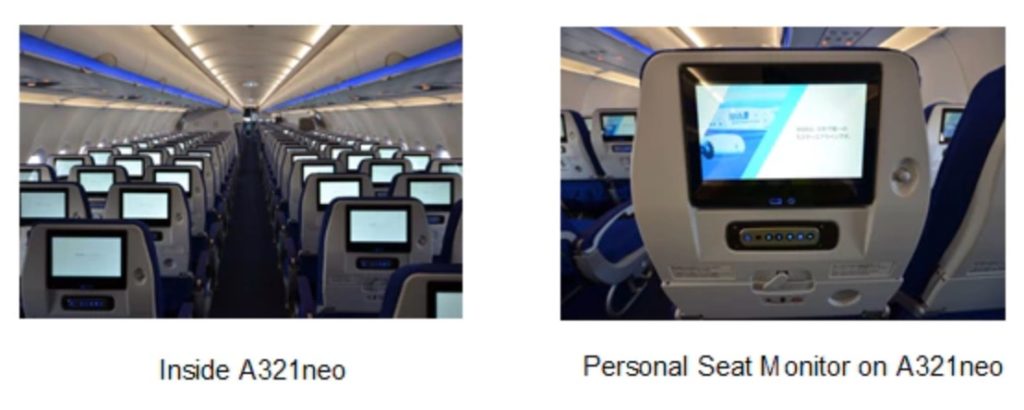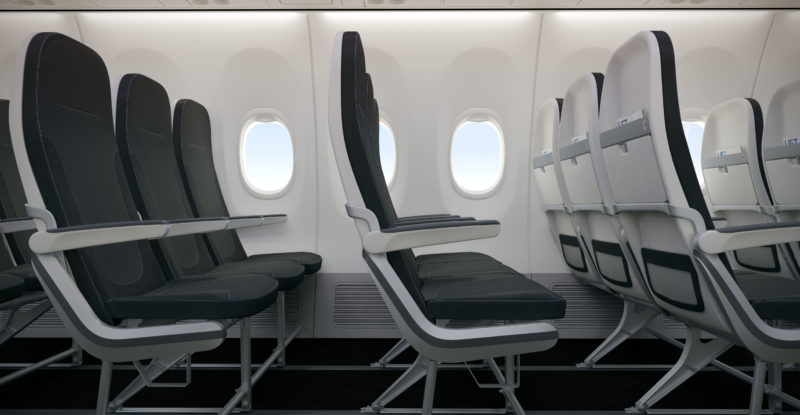Seatback inflight entertainment isn’t every airline’s cup of tea. Though nearly all new longhaul widebodies are still delivered factory-fit with wired IFE systems, consider this – a not immaterial batch of United Airlines 777-200s previously offered audio/video on demand (AVOD) before being reconfigured for domestic use, and going all-wireless. WestJet removed its in-seat LTV live television product, and likewise went streaming. Qantas installed AVOD on only some of its domestic A330s, while it provides tablets on the rest. And American Airlines recently decided not to adopt in-seat IFE on its new Boeing 737 MAXs. though the carrier’s passengers, in general, need to be reminded that wireless entertainment is on offer.
.@AmericanAir flight attendant: Nobody knows that we have streaming entertainment. Maybe fix that?#PaxEx pic.twitter.com/lApsx7zCVr
— Jason Rabinowitz (@AirlineFlyer) December 21, 2017
In defiance of what some perceive to be a growing industry trend to go all-wireless for domestic operations, Japanese carrier All Nippon Airways has announced it will retrofit the bulk of its domestic widebody fleet not only with in-seat power and USB ports but also with in-seat IFE. A retrofit program of the carrier’s Boeing 777s and 787s will kick off in the second half of ANA’s 2019 fiscal year.
This is a major #PaxEx upgrade, and while your author confesses to being surprised at ANA’s announcement, perhaps I need look no further than the competition posed by its domestic rival. No, not just Japan Airlines. I’m speaking of the high-speed Shinkansen railway network. Known as the “bullet train”, Shinkansen competes with airlines directly on very high-trafficked routes, including between Tokyo and Osaka. And in the face of a turf battle, ANA for the last few years has been working to enhance the passenger experience “at all stages”, including in-flight, though it has adopted high-density seating configurations on its domestic widebodies. (If you are not tracking aircraft interior trends in tandem with inflight technology, you’re not paying attention.)
ANA also recently took delivery of its first few Airbus A321neos, equipped with satellite connectivity from Panasonic Avionics and nose-to-tail RAVE seatback IFE from Zodiac Inflight Innovations. The A321neos will be unique in ANA’s domestic narrowbody fleet insofar as its 737s – and indeed its 767 fleet – will see only USB power installed and entertainment will remain a streaming-only service. But here again, ANA could be seen as bucking a trend in offering seatback IFE on brand new re-engined narrowbodies.
“We offer the IFE entertainment to our customers on our domestic network because we want to make their entire journey enjoyable,” explains ANA’s Naheel Dajany. “The flight time of a domestic trip is not so long and passengers will not be able to use their own devices during take-off and landing, so they are able to enjoy the wide selection of our in-flight entertainment program instead. This service differentiates us from LCC and rail transportation.”

ANA has gone Zodiac RAVE nose-to-tail on its new A321neos. Image: ANA
On the inflight connectivity front, ANA has been progressively installing Panasonic Avionics’ satellite solution across its domestic fleet – it first announced the arrangement in early 2016 – and it now says it expects to have 100 aircraft completed by the end of fiscal year 2018 (ANA offers a mixture of OnAir L-band and Panasonic Ku on its international fleet).
In announcing that it will add in-seat IFE to its domestic 777s and 787s – the bigger story in your author’s estimation – ANA also announced that it will begin offering free inflight connectivity on domestic flights starting 1 April 2018, a move almost certainly intended to match the offer from its major competitor Japan Airlines, which provides free connectivity via Gogo’s traditional Ku system – a service which is prominently advertised to passengers as FREE. Japan Airlines group’s JTA unit is a customer of Gogo 2Ku.
British Airways Launches Gogo 2Ku
After months of beta testing, British Airways launched its long awaited Gogo 2Ku connectivity service on 8 December. The system will be installed on four longhaul aircraft by the end of 2017, so the odds of finding yourself on an equipped flight at this time are still quite low. However, with Gogo able to install 2Ku in just about 30 hours, expect those odds to increase rapidly.
Split into “browse” and “stream” packages, prices start at £4.99 and £7.99, respectively, and are offered in buckets of one hour, four hours or the full flight.
Looks like @British_Airways has branded its upcoming WiFi service ".air"
Prices "from £4.99." First hour is free via a promo with @visa. Pricing broken down into "browse" and "stream" packages.
Browse = 250 Kbps
Stream = " no less than approximately 1Mbps"#PaxEx pic.twitter.com/H9cnwbApmG— Jason Rabinowitz (@AirlineFlyer) December 20, 2017
The service will be tiered by time, but not metered by data use. While 2Ku is highly capable of fast speeds, British Airways is making minimum speed claims, rather than maximum. For the stream package, BA says it will “endeavor to provide an experience of no less than approximately 250Kbps”, while the stream package will “provide an experience of no less than approximately 1Mbps”.
While certainly not the fastest speeds available, British Airways suggests 1Mbps is enough to stream Netflix and other video services.
LIFT Takes Off
LIFT by Encore, a newcomer to the commercial aircraft seating space, has seen its first set of seats enter service. The “Tourist Class” seats were delivered linefit with LOT’s first Boeing 737 MAX, which recently began operations between Warsaw and London.
Developed specifically for the 737, the seat was first revealed seemingly out of nowhere during the 2016 Aircraft Interiors Expo. Since that first reveal, LIFT has accepted quite a lot of feedback and enhanced seat comfort. Your author had the chance to try the seat at the 2017 Expo and was surprised at its comfort.
LIFT says it has worked with Boeing to fully integrate the seat into 737s with the Boeing Sky Interior, carving out any available extra space for passenger use. The company suggests that this is the widest seat available for the 737, a claim that has been thrown around elsewhere in recent years, most notably by Southwest Airlines with respect to Rockwell Collins’ (formerly B/E Aerospace’s) Meridian seat.
Related Articles:
- ANA expands wifi equipage; taps Panasonic for Ku on Boeing 787s
- All Nippon Airways versus Japan’s high-speed rail: game on
- ANA seeks to woo US travelers with Experience class version 2.0
- LIFT by EnCore doubles down on design with an eye to future products
- #Humpspotter Alert: British Airways 747 with 2Ku breaks cover
- Considering the impact of American’s MAX entertainment decision
- Seatback IFE’s much-heralded death fails to materialise, again











